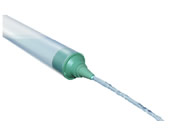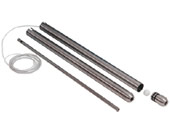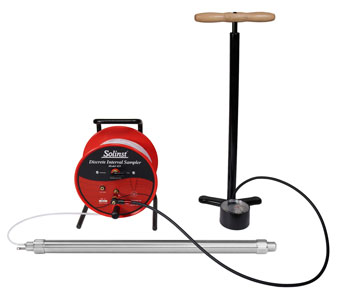No-Purge samplers, also known as grab samplers, collect groundwater water from a discrete depth without introducing sample biases from pumping or purging. Use where standard purging technology is either not efficient or impractical. These Solinst samplers are portable and have no power requirements.
For representative samples, always lower and steadily raise grab samplers slowly to prevent agitation (reduce turbidity and aeration).
| Model Number & Groundwater Sampling Device | ||||
|---|---|---|---|---|
| Sampler Materials |
|
|
|
|
| Standard Sizes & Volumes |
|
|
|
|
| Sampling Depths |
|
|
|
|
| Operation Overview |
|
|
|
|
| When Lowering Sampler: |
|
|
|
|
| When Retrieving Sampler: |
|
|
|
|




